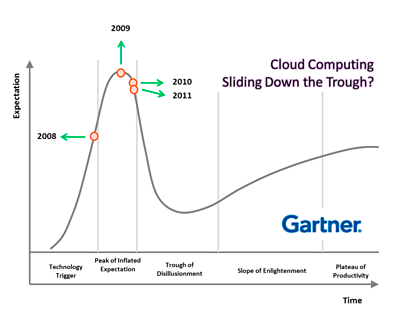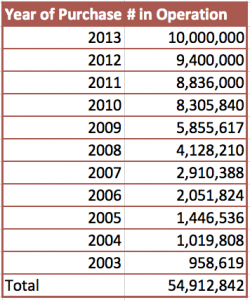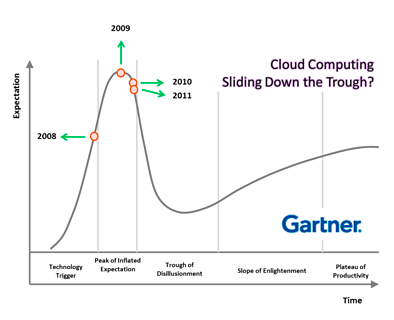When asked “Is it always better to own your own data center?” ZDNet and TechRepublic’s CIO jury panel of technology decision-makers responded with a resounding “NO” by a margin of 11 to 1. Not many argue with the speed with which computing is moving to the cloud. [http://goo.gl/MfD5AO]
The basic advantages of “the cloud” or “clouds” are now well established:
- Lower cost
- Better security
- Scalability
- Easier redundancy
- Higher reliability possible
But clouds also require new technology expertise and are not “zero management”. Though facilities and some services are taken care of, much remains to be architected and operationalized in order to effectively implement and cover the full range of needs of the applications being run there.
A Whole New Industry of Practitioners and Consultants
Naturally, Clouds are attracting both venture capital and private equity interest and new companies are emerging every day. The tags “cloud” and “cloud hosting” return hundreds of companies on Crunchbase. A level of maturity is indicated by the Gartner hype-cycle that shows that Cloud Computing has already slid down the “trough of disillusionment” and is well on its way up the “Slope of Enlightenment” towards the “Plateau of Productivity”. Out of the hundreds of startups focusing on facilitating cloud usage and services, there will be winners, losers and consolidation.

How Big of a Cloud (Literally) Does the World Need?
Veoci began on a Cloud. We opened an account on Amazon Web Services and were in business in minutes. We made the decision from the onset to go SaaS (Software as a Service) and not invest in an on-premise version of our product; as such we’ve always tried to be extra smart about making sure that any infrastructure we relied on would be flexible and scalable to our growing needs. This got me thinking…just how big of a cloud does the world need?
Data from Gartner for server shipments for 2Q2013 says that 2.5 million servers were shipped world-wide that quarter, which hypothetically means 10 million servers for the year. Also according to Gartner, that represents a 6% growth from 2012. Let’s assume, just to get some rough numbers, that there’s been 6% annual increase for the past 10 years; let’s also assume that servers are being taken out of service at a rate of 25% each year after four years of usage. Extrapolating backwards gives us about 55 million servers in operation today.

Recent news puts the number of servers employed by AWS to be potentially 450,000 spread over 4 regional data centers. Conservatively speaking, that means each cloud data center has over 100,000 servers, which falls in line with general observations about large data centers. If we were to distribute the 55 million servers across data centers with 100,000 servers each, we get:
55,000,000 / 100,000 = 550 data centers
This means that based on our admittedly unscientific analysis, just 550 data centers could accommodate all the servers operating in the world at this moment.
A hundred thousand servers in each of 550 data centers might seem like a very large number, but it really isn’t, relatively speaking. A simple estimate using a square foot of floor space per server gives a hundred thousand square feet – two football fields, a mile of racks.
Now think of it this way. There are approximately 2.8 billion people who have Internet access. About a thousand football fields’ worth of servers would serve their cloud computing needs at current usage. Each football-field of servers would provide computing for 3 million people which works out to 0.02 square feet of a Cloud data center space per person – for reference, each person in the US is serviced by 5.4 square feet of supermarket.
The power requirements are also interesting. Assuming 100 watts per server, the total global power requirement for all thousand potential cloud centers is 5 GigaWatts out of the global installed capacity of 3,500 GigaWatts – 0.14%. If we were to go green, each of the 100,000 server clouds would need 70 football fields of solar cells or 7 large 1.5 MW wind turbines.
Even when considering massive growth in cloud infrastructure expansion and usage, the overall physical size of the cloud remains relatively small in proportion to the magnitude of the traffic it will serve and the global land mass. Looking ahead, perhaps we’ll see a few hundred clouds globally run by a handful of companies and an army of smaller companies that help the million small, medium and large businesses use the cloud – to reduce cost, improve reliability and get security that only the very biggest companies can afford today. To use a well-worn phrase – when it comes to cloud computing, the sky’s the limit.
Have a look at our spreadsheet to see the data: The Cloud – By The Numbers








